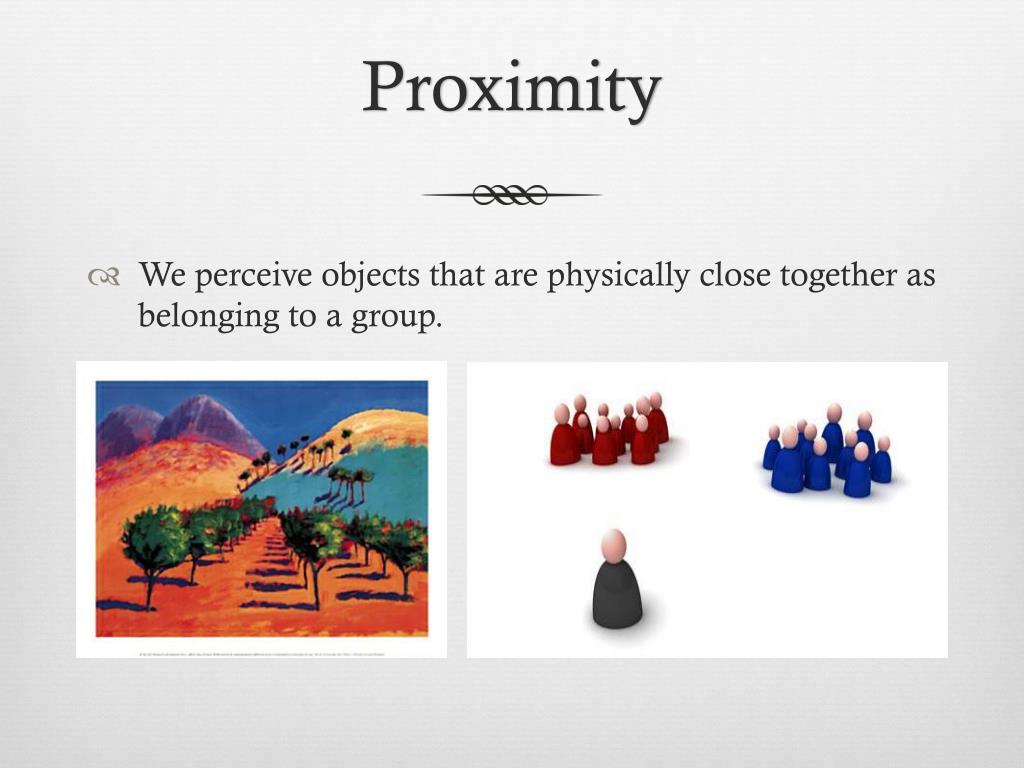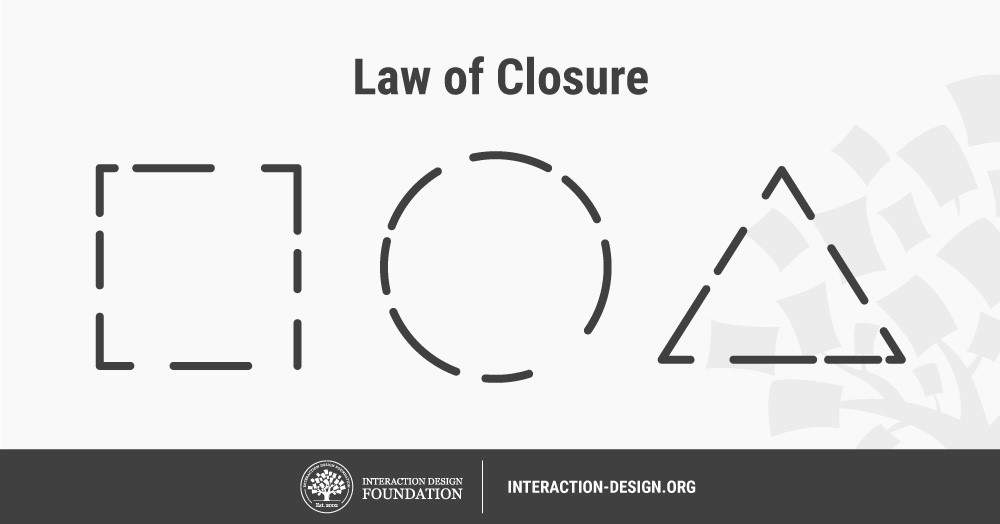

In UX design, using similarity makes it clear to your visitors which items are alike. It’s why buttons for calls to action are often designed in a different color than the rest of a page-so they stand out and draw the visitor’s attention to the desired action. Of course, you can make things dissimilar if you want to make them stand out from the crowd. The squares here are all equally spaced and the same size, but we automatically group them by color, even though there’s no rhyme or reason to their placement. Similarity can be used to tie together elements that might not be right next to each other in a design. They can be grouped by color, shape, or size. In gestalt, similar elements are visually grouped, regardless of their proximity to each other. It’s human nature to group like things together. There are also some additional, newer principles sometimes associated with gestalt, such as common fate. There are six individual principles commonly associated with gestalt theory: similarity, continuation, closure, proximity, figure/ground, and symmetry & order (also called prägnanz). Our brains are built to see structure and patterns in order for us to better understand the environment that we’re living in.
#Similarity psychology definition series#
In the simplest terms, gestalt theory is based on the idea that the human brain will attempt to simplify and organize complex images or designs that consist of many elements, by subconsciously arranging the parts into an organized system that creates a whole, rather than just a series of disparate elements. Regardless of who first proposed the ideas (there have been essays dating back as far as 1890), gestalt principles are an important set of ideas for any designer to learn, and their implementation can greatly improve not just the aesthetics of a design, but also its functionality and user-friendliness. The most influential early proposal written about the theory was published by Max Wertheimer in his 1923 Gestalt laws of perceptual organization, though Wolfgang Köhler’s 1920 discussion of Physical Gestalten also contains many influential ideas on the subject. This principle is one of the most important underlying ideas behind the gestalt principles of visual perception. It’s why we see faces in things like tree leaves or sidewalk cracks. The human brain is exceptionally good at filling in the blanks in an image and creating a whole that is greater than the sum of its parts. The “E” and “x” in the FedEx logo create an arrow within the negative space between them.

But then there are designs that use that white space to infer an element that isn’t actually there (the arrow hidden between the E and X in the FedEx logo immediately comes to mind as an example). Leaving white space around elements of a design is the first thing that usually comes to mind. Negative space has long been a staple of good design. Previous experience with the figure or form facilitates our natural tendency to perceive an incomplete or partially hidden object as the same object that's stored in our memory.Listen to the audio version of this article Through this example, we can infer the brain's tendency to ignore the gaps and see the figure as a circle.

For example, a circle drawn using broken lines is still perceived by the brain as a circle. Gestalt psychologists believe that the brain tends to perceive forms and figures in their complete appearance despite the absence of one or more of their parts, either hidden or totally absent. For instance, instead of identifying every single of a large number of dots in a paper, the brain perceives them as clusters of dots. Thus, the law of proximity helps us to gain understanding of information much faster. In addition, this principle relieves us from processing so many small stimuli. The principle of proximity enables us to group elements together into larger sets. The distance that defines how close or far the stimuli are from each other is subjective to every individual. Meanwhile, stimuli that stand far from one another are parts of two or more different objects. The law of proximity states that humans perceive stimuli that are close to each other by grouping them and recognizing them as part of the same object. Suppose that all aspects related to the stimuli are equal.


 0 kommentar(er)
0 kommentar(er)
